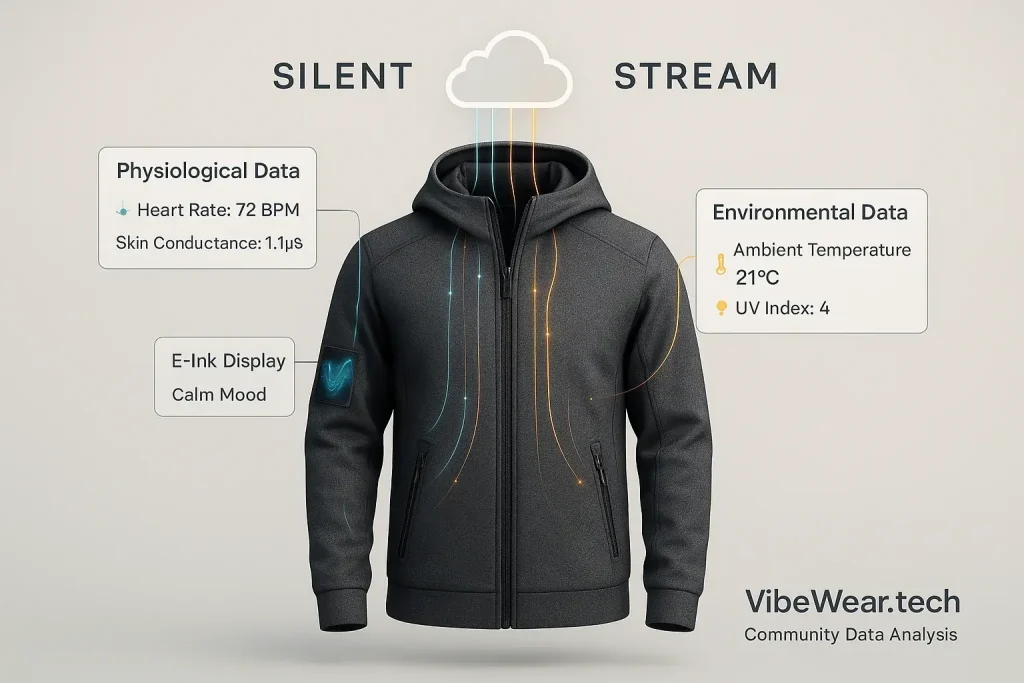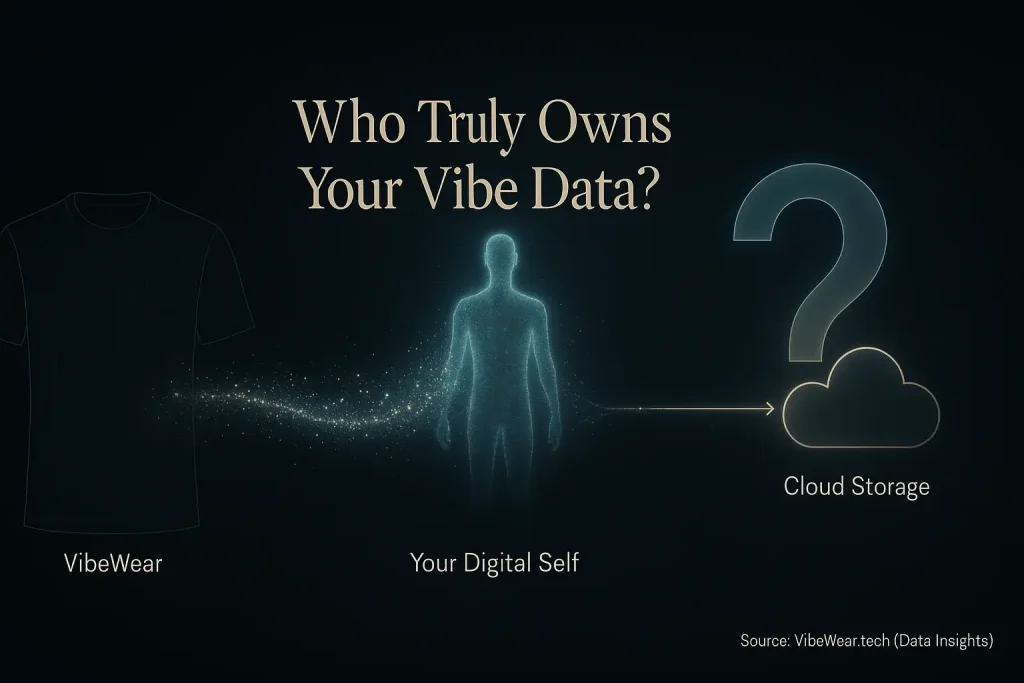Is Your Vibe Truly Yours? Unpacking Authenticity in Adaptive Fashion
How do you truly show your inner world? VibeWear offers a powerful canvas for emotions, displaying feelings through dynamic e-ink. Yet, this power presents a profound question. Imagine feeling a quiet joy, but your VibeWear broadcasts a vibrant, energetic pattern. What does that do to your inner world?
Emotional authenticity means your outward expression matches your internal state. It is about genuine feeling. VibeWear, however, can challenge this traditional understanding of self-expression. The line blurs. This conversation explores that sensitive boundary between real and performed emotions.
VibeWear invites this deep exploration of emotional authenticity. We examine the subtle differences between purely genuine feelings and consciously displayed expressions. The technology itself is compelling. More vital is understanding its effect on our human experience and self-perception.
The Vibe Gap: When Displayed Emotion Meets Inner Reality
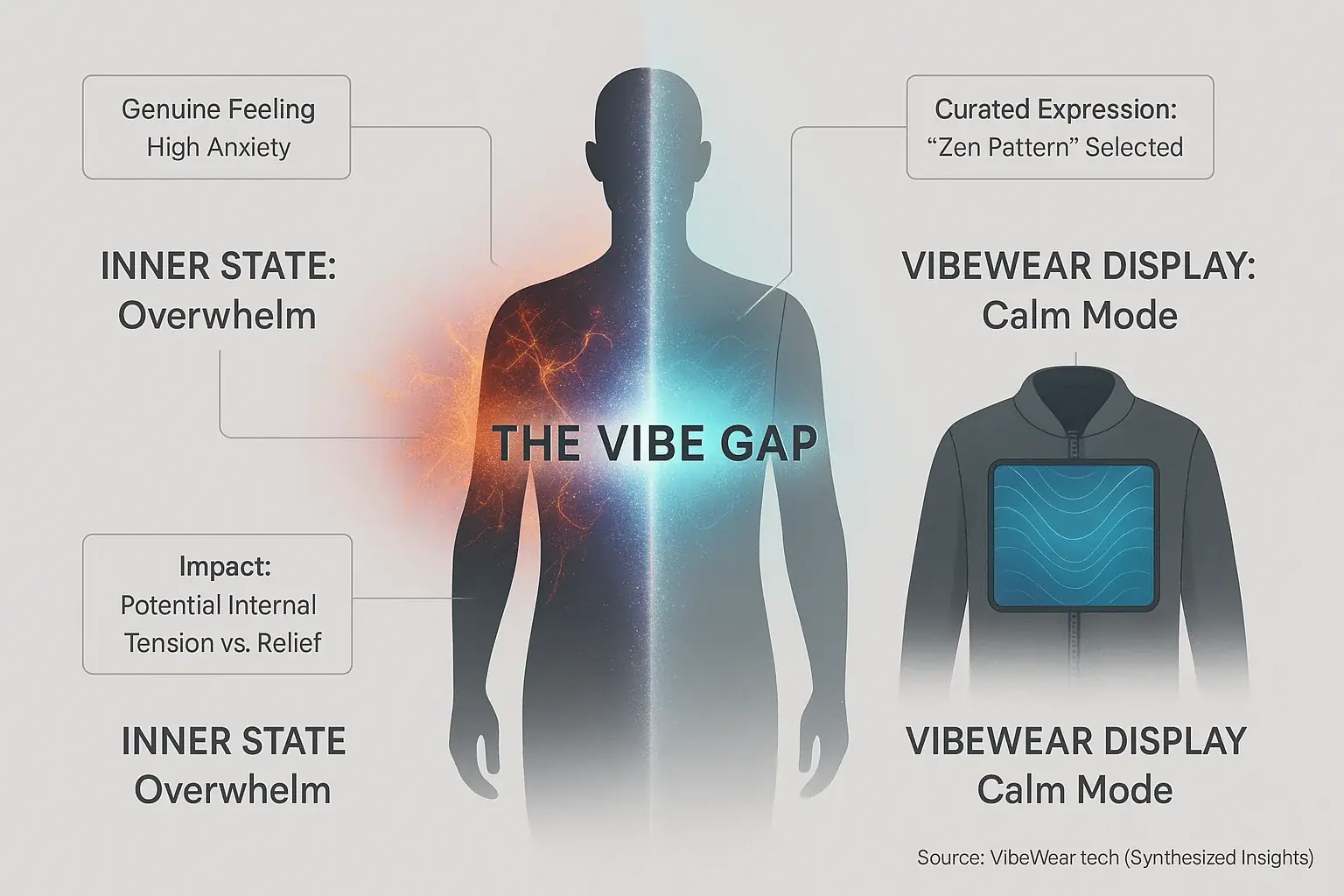
Genuine emotion arises from your core. It is unfiltered. Performed emotion, however, is a curated display. VibeWear technology grants users explicit control over their e-ink expressions. This control inevitably opens a potential 'vibe gap' – a space between inner feeling and outward presentation. Consider a user feeling overwhelmed. They choose to display a 'zen' pattern on their jacket. What happens internally when your outward self doesn't match your inward self? This question explores a new kind of psychological tension.
People might 'perform' emotions for various reasons. Social conformity often pressures individuals. Professional settings may necessitate a specific emotional facade. Personal comfort can also motivate a curated emotional display. VibeWear could make these choices more overt, more tangible. Selecting a 'confident' pattern before a presentation becomes a deliberate act of persona crafting. The technology provides a direct interface for managing perceived emotional states, potentially amplifying existing social dynamics of emotional labor.
This potential disconnect between displayed and felt emotion carries complex psychological impacts. Does consistently projecting a 'positive' vibe, while internally struggling, shift one's true emotional state? Insights from the VibeWear think tank suggest user experiences could diverge significantly. Some individuals might find relief in a curated emotional display, a temporary shield or a tool for aspiration. Others, however, might report increased internal tension. This creates a silent battle between what they show the world and what they truly feel.
Yet, the dynamic offers nuance. Sometimes, consciously performing an emotion can serve as a tool for self-regulation. Choosing to display a 'calm' pattern might actually help soothe anxiety. This is a fascinating intersection of technology and emotional management. But a critical question emerges. Where is the line between beneficial self-regulation and potentially harmful self-deception? VibeWear encourages this exploration. The boundary remains a subject for careful consideration.
Mirror, Mirror on My Sleeve: How VibeWear Shapes Self-Perception
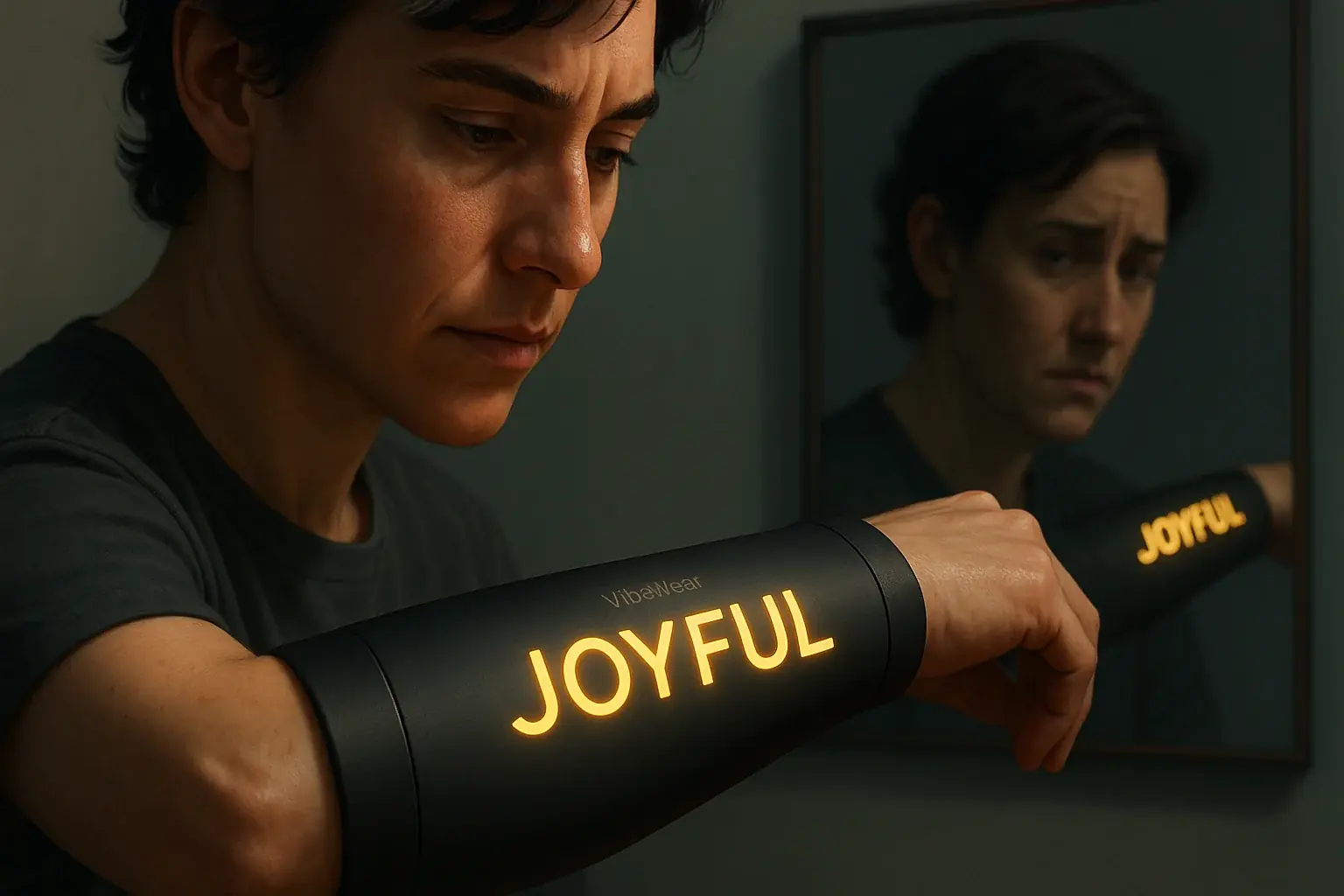
Your VibeWear mirrors more than a mood. It subtly shapes your self-perception. External displays can influence internal states. Think about it. If your garment consistently shows 'confident', do you start feeling more confident? Perhaps so. It could become a quiet, powerful self-fulfilling prophecy.
This opens doors for positive self-reinforcement. VibeWear could become your personal mood architect. Imagine setting your sleeve to 'calm' during a stressful day. VibeWear's investigation reveals users may find it acts as a subtle reminder. It's a visual affirmation of who they aspire to be. A constant, gentle nudge towards a desired emotional state. This tech could actively cultivate well-being.
Yet, there's another side to this coin. The pressure to perform a vibe. What if your VibeWear broadcasts 'joyful' while inside you feel turmoil? This disconnect creates internal friction. Does this forced display challenge true self-acceptance? Authenticity becomes a tightrope walk. Maintaining an external facade can be exhausting, potentially leading to self-deception if unchecked.
Where does this leave identity then? VibeWear's dynamic canvas proposes a new concept: the 'Authentic Tech Self'. Is this an extension of our core identity, genuinely expressed? Or does it risk becoming a curated, less truthful persona? This psychological feedback loop between displayed self and internal self demands careful navigation. It’s a frontier of personal expression. VibeWear’s ongoing research explores these nuances.
The Social Stage: Performing for Others with Your VibeWear
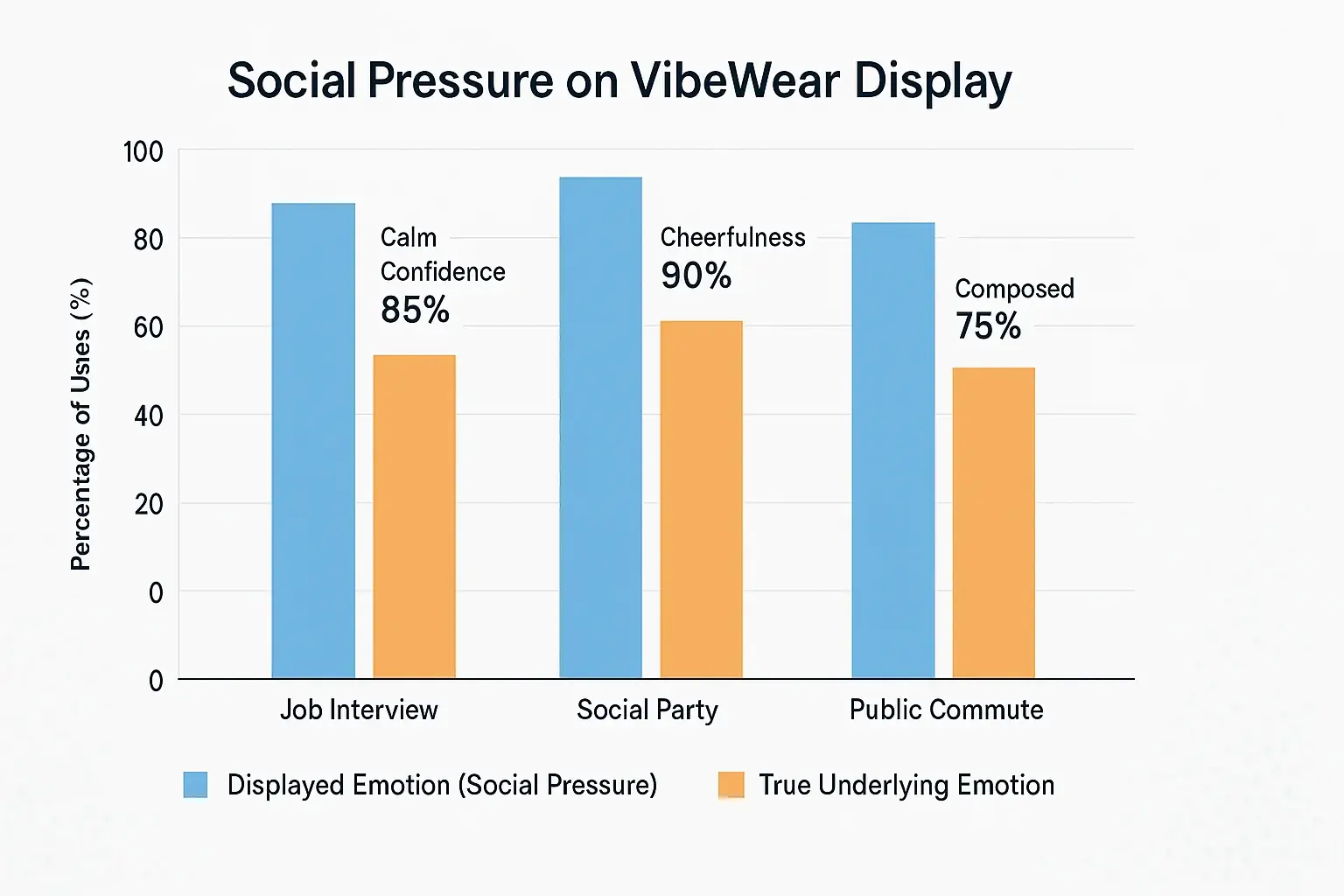
Social pressure shapes daily interactions. We frequently perform emotions for others. VibeWear could amplify this existing human tendency significantly. Consider a job interview. Your VibeWear projects 'calm confidence'. Inside, your stomach churns with nerves. Is this outward display helpful? Or is it a subtle deception? What message does this send to your interviewer, and more critically, to yourself? The boundary feels indistinct.
This pressure from social expectations manifests across various contexts. Workplaces often demand composed professionalism. Social gatherings encourage outward cheerfulness. Public spaces possess their own unwritten rules for emotional display. VibeWear users might rapidly discern these norms. Certain 'vibes' could become implicitly required in specific settings. This subtly nudges individuals. Genuine emotional expression may diminish. Are you connecting authentically, or merely conforming to an expected emotional current?
Such constant emotional performance deeply impacts personal authenticity. Emotional suppression becomes a tangible risk. Interactions could consequently feel more superficial, lacking true depth. If everyone projects curated emotions via their apparel, collective empathy might suffer. We could struggle to perceive and respond to the genuine feelings of others. Real human connection often requires vulnerability. Tech-mediated emotional displays might inadvertently obscure it. This is a crucial consideration for wearable technology.
Design choices could mitigate these inherent social pressures. VibeWear might offer users enhanced control over their public emotional broadcasts. Perhaps a 'private mode' could display dynamic patterns visible only to the wearer, fostering self-reflection. Alternatively, 'ambiguous' or abstract visual outputs could offer plausible deniability regarding one's precise emotional state. Users need clear agency. The technology should aim to empower authentic self-expression and connection, not inadvertently enforce a new layer of performative emotional labor. Thoughtful, ethical design is paramount here.
The Algorithmic Self: How VibeWear's Tech Interprets (and Shapes) Your Emotions
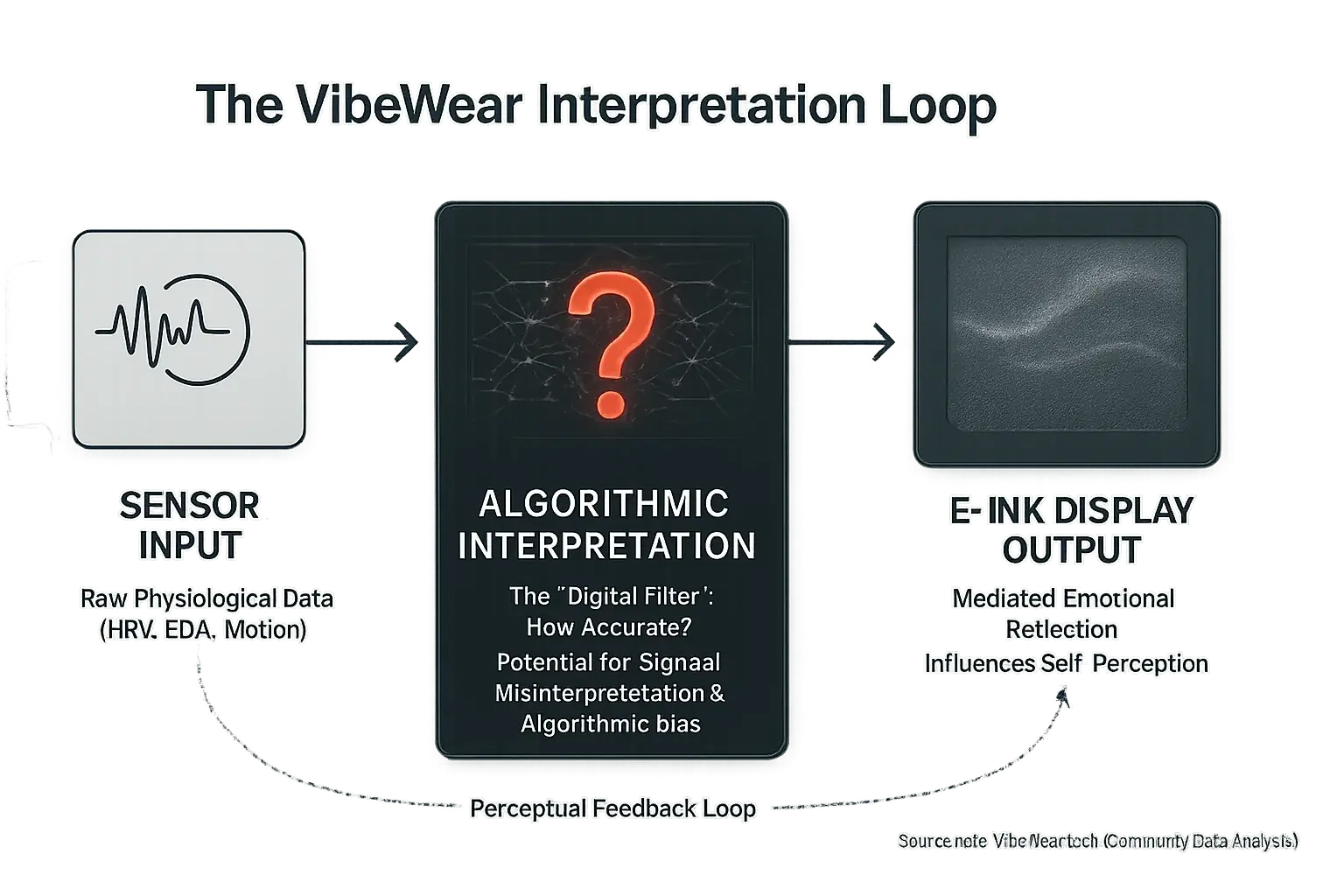
VibeWear technology does not perform mind-reading. It interprets physiological signals from your body. Biometric sensors gather this complex, raw data. Algorithms then translate these inputs into visible emotional displays. But how accurate is this digital reflection? Imagine this. A sensor misinterprets your genuine excitement as sudden anxiety. Your shirt then displays a 'calm' pattern. What does that do to your immediate self-awareness? Does the technology's guess subtly become your perceived reality?
Sophisticated algorithms generate these dynamic e-ink patterns. Are these algorithms neutral translators of your inner state? Or do they perhaps embed certain 'ideal' emotional responses, subtly shaping what gets shown? This is a crucial, often unspoken truth about expressive tech. Insights from the VibeWear think tank, analyzing early experiences with similar technologies, reveal a fascinating observation. Some users report feeling subtly nudged by their device’s feedback towards a particular emotional state. A gentle push, algorithmically delivered.
This interaction creates a powerful feedback loop. Seeing your supposed emotions displayed externally by technology might actually change how you experience those feelings internally. If your VibeWear consistently reflects 'stress' based on its readings, do you then begin to feel more stressed, or interpret ambiguous feelings as stress? This potential reliance is significant. Users could, over time, find the tech's interpretation overshadowing their own nuanced, intuitive grasp of their inner emotional landscape. Are you feeling it, or is the garment telling you that you are?
Designers and developers, therefore, carry a profound responsibility. Ethical algorithm design is not just a feature; it is fundamental. Transparency in how these systems interpret and display emotion must be a core principle for VibeWear and the industry. Technology should empower your authentic emotional expression. It must never dictate or distort it. VibeWear's vision is clear: your true self, amplified and understood. Not algorithmically reshaped.
A New Identity? Embracing the 'Authentic Tech Self' in a Connected World
Authenticity is not fixed. It constantly evolves. New tools redefine self-expression. VibeWear proposes the 'Authentic Tech Self'. This idea suggests a deep shift. For some, expressing subtle mood shifts via a dynamic garment might feel more authentic than struggling with words. It offers a new way to genuinely 'be' yourself.
How does this 'Authentic Tech Self' manifest? It is not about faking emotions. Technology empowers nuanced, dynamic self-presentation. This manifestation bridges digital identity with physical reality. VibeWear's data synthesis suggests many digital natives find this blend of tech and self-expression feels natural. It can be empowering. A direct extension of their online personas into the physical world.
But is it still 'you' when technology is involved? This question arises. Consider history. Tools have always shaped human identity. Clothing choices express personality. Makeup alters perceived self. VibeWear continues this long trend of technological evolution. It is another layer. Another tool for selfhood.
This conversation about identity is ongoing. VibeWear challenges established definitions of selfhood. Yet, it also opens new pathways. These pathways can lead to richer, more dynamic expressions of being ourselves. The exploration is only beginning.
Related Insight: Bias in the Vibe: Ensuring Fairness in Emotion Recognition Algorithms
VibeWear champions genuine emotional expression. This core promise hinges on truly unbiased biosensors. Algorithms interpreting your mood must be fair. Bias is a risk.
Unchecked, algorithmic bias could distort your Vibe. That undermines authenticity. We believe ensuring fairness in emotion recognition is an ethical imperative. VibeWear actively explores solutions for equitable mood-adaptive technology. Stay tuned for our deep dive into this complex, crucial topic.

